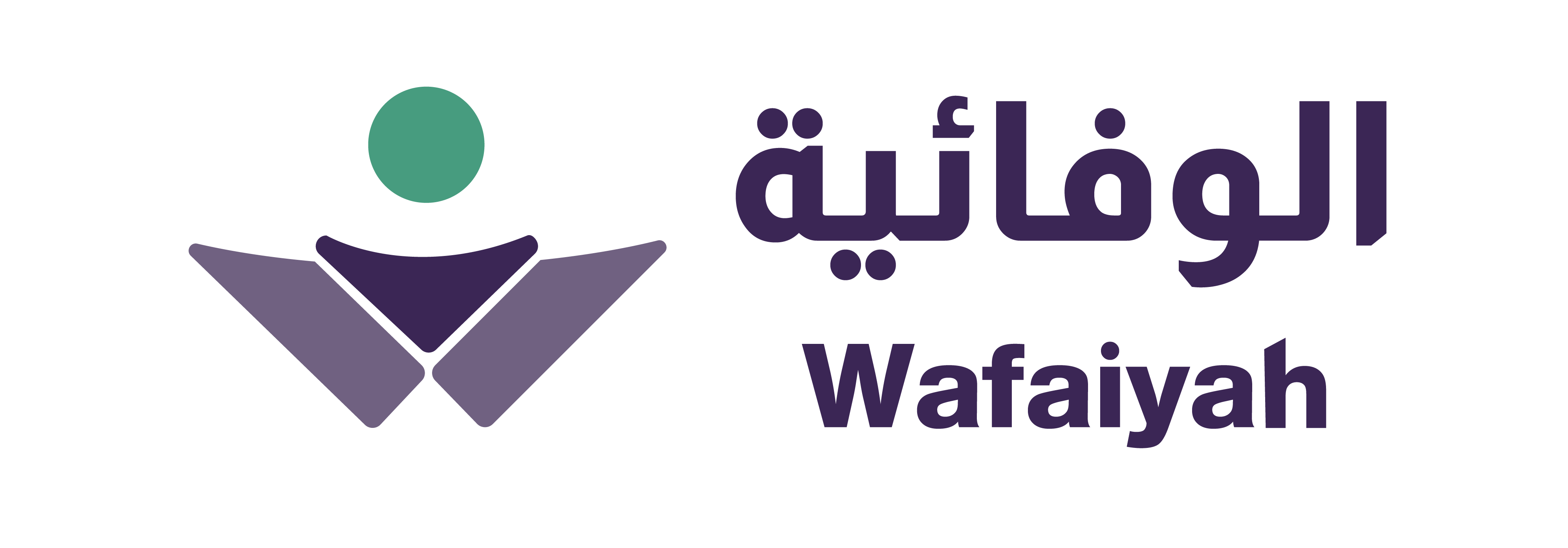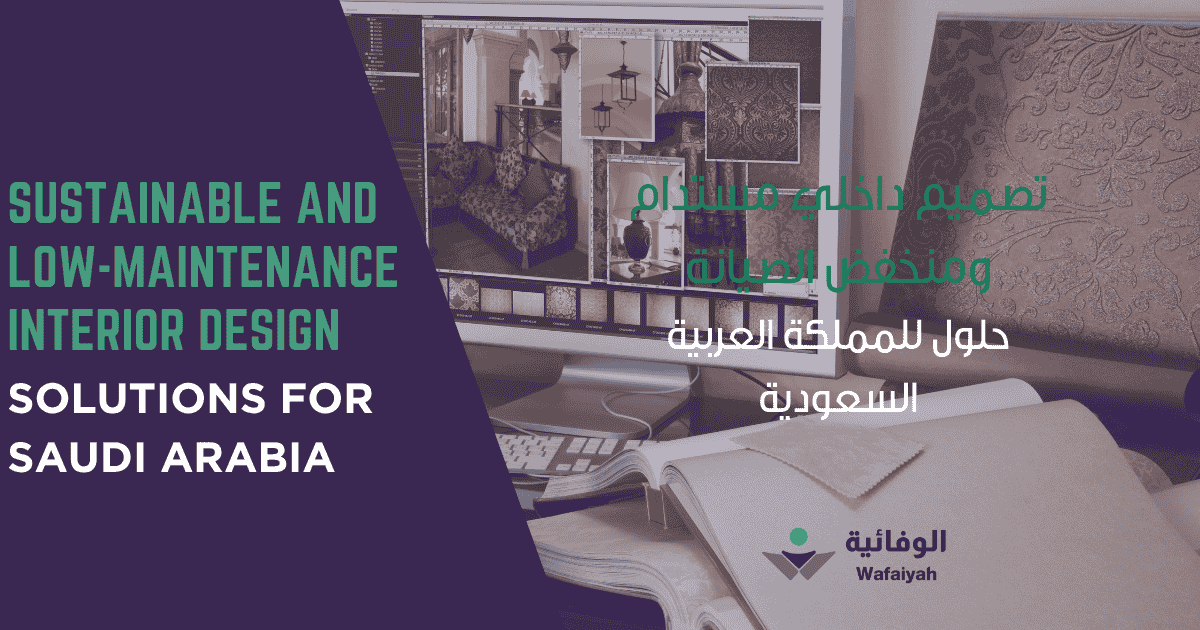Sustainable living is gaining strong popularity in Saudi Arabia as more people look for ways to reduce their environmental pressure. In hot and arid climates, eco-conscious interiors that require less maintenance are not just a trend; they are becoming a necessity. Homeowners and businesses are seeking practical ways to stay comfortable while saving energy and water. At the same time, design and visual appearance remain more important. At Wafaiyah, we believe that sustainable interiors can be both beautiful and functional. This guide explores smart, stylish solutions that support a greener future without compromising on comfort or style.
Saudi Arabia is a place on earth which is known for its hot desert climate, where temperatures and weather conditions are extreme and very dry. Buildings should be constructed in a way that can withstand this rough atmosphere and remain cool and functional. Meanwhile, Saudi people prefer to reside in prominent families, and thus, interiors should have spacious places to live and indicate good local traditions of friendship.
The interior design should be more focused towards better resistance, simple maintenance, and heat. The materials that remain cool and do not need much maintenance are essential to use. Knowing the basic climate needs, it is better to develop a welcoming, long-term, and excellent comfort in everyday life.
Basic Principles of Sustainable Interior Design
The purpose of sustainable interior design is to reduce the damage to the environment and improve the comfort of the interior. Energy performance is always defined through lighting systems, insulation, and cooling systems. Using recycled materials will help to save the environment and the household economy.
Indoor air quality is essential, as low-emission paints, finishes and upholstery should be used. Waste reduction and recycling play an important role during construction as well as decoration. Not only do these principles help the planet, but they also make homes healthier, more efficient and more cost-effective in the long run.
Low-Maintenance Materials and Finishes for Interior Design
Flooring Options
To have washable, durable, and low-maintenance flooring, polished concrete, porcelain tiles, and terrazzo are the top recommendations. They are stain-resistant, can handle maximum traffic and can be easily cleaned. All their surfaces are smooth and hard. This is the ideal surface to be used in dusty climates in businesses or at home, which requires both beauty and a practical aspect.
Wall Finishes
Walls have durable and environmentally friendly finishes. Clean aesthetics, light maintenance and free of toxins are provided by lime plaster and non-toxic paints. To achieve a more luxurious look, Tadelakt, a natural Moroccan plaster, is waterproof and smooth and thus suitable to use in bathrooms and accent walls, although it is easy to clean.
Countertops and Surfaces
Quartz counters are non-porous, strong, and simple to clean. The use of recycled glass surfaces provides colour and sustainability, which gives it a special design element. Stainless steel is a non-staining, heat-resistant, and low-maintenance material in kitchens since it also results in less staining and wear of the material.
Upholstery & Fabrics
Select nonfading and dust-repellent fabrics to make the interiors look dazzling with minimum cleaning. To make it more sustainable, you can use cactus-based material alternatives (such as Desserto) instead of leather. These materials are slippery, easy to wipe down, and can last a long time in warm, dry conditions.
Sustainable Lighting and Energy-Efficient Systems
When we talk about sustainable lighting, it holds primary importance in a place like Saudi Arabia. You should be focusing on:
- Use of natural light: skylights, large windows with UV-filtering glass
- LED lighting systems and smart controls
- Solar-powered lighting and ventilation
- Energy-efficient HVAC systems are designed for dry climates
It is impossible to construct eco-friendly buildings without sustainable lighting solutions. Natural light is provided via skylights, and windows allow maximum UV-filtering into the interior spaces. This eventually helps the spaces to stay bright and save electrical power. LED lighting also reduces energy and lasts a lot longer than normal bulbs.
Besides, HVAC systems are suitable for being energy-efficient to heat/cool buildings in dry environments without loss of performance. Such systems save costs linked with utility use but also reduce the effect on the environment. All these solutions are mentioned to be the sensible and environmentally friendly option when it comes to designing eco-sustainable buildings.
Latest Ideas of Eco-Friendly Furniture and Decor
Environment-friendly furniture and interior decor not only have a style, but they are also sustainable. Any furniture made of tough wood adds value to the entire interior design. Multi-functional furniture saves the trouble of using space and reduces clutter. Minimalist design projects consume less material, which makes the place open and purposeful.
Natural nature products such as ornaments in clay, jute, rattan and recycled metals are sustainable, and provide that natural earthy touch. These considerate decisions bring about a beautiful inside and at the same time, create a greener lifestyle and a more responsible way of living and designing.
Indoor Plants Suitable for Saudi Arabia
For the interior space, the snake plant, ZZ plant, and aloe vera are ideal in Saudi Arabia. These plants require little care and are drought-resistant, which makes them suitable for surviving in dry temperatures. In addition to their low maintenance levels, they also purify the indoor air by filtering toxins.
To maintain these plants in a healthy state, put them in indirect sunlight. Avoid over-watering of these plants, and the pots should be drainable. Use water at room temperature and do not mist the plants frequently.
The fact that they are hardy plants means that they survive and flourish in the Saudi setting. They do not require undue care to be attractive as well as beneficial to health.
Future of Smart Technology for Maintenance and Sustainability
Smart Thermostats and Lighting Systems
Smart thermostats are energy efficient as they automatically adjust themselves. These smart lighting systems provide motion sensors and timers to switch the lights and make the operation better. Hence, no power is wasted in the cases of non-need situations.
Automated Irrigation for Indoor Plants
Indicators, such as automated irrigation systems of indoor plants, check the moisture in the soil and supply water. These systems reduce watering shortages, provide healthy plants, and preserve water. The app’s connectivity will enable non-contact control over the process of watering and offer water conservation.
Water-Saving Bathroom and Kitchen Fixtures
Some of the modern smart fixtures are low-flow toilets, taps, and showerheads fitted with sensors to regulate the flow of water. They use less water and at the same time do not degrade performance. Other models check the quality of water in the piping. They also help to identify leaks without wasting water and causing expensive damage.
Smart Blinds for Heat Control
Smart blinds automatically adjust according to the sunlight and the time of day. Along with smart home hubs, they can be programmed or operated from afar, which helps in energy conservation and indoor climate.
Conclusion
Choosing sustainable interiors offers long-term savings, protects the environment, and makes everyday upkeep easier. In Saudi Arabia’s climate, wise design choices can truly make a difference. Whether you’re a homeowner, developer, or interior designer, now is the time to embrace greener living. At Wafaiyah, we’re committed to creating spaces that are both practical and stylish. Let’s work together to build a more sustainable future, one beautiful, low-maintenance interior at a time.
Frequently Asked Questions
1. What interior materials are best suited for the Saudi climate?
Porcelain tiles, polished concrete, and quartz countertops work well due to their heat resistance and durability.
2. Can sustainable interiors still look luxurious?
Absolutely. Eco-friendly materials like reclaimed wood, bamboo, and recycled glass can offer a high-end aesthetic when used thoughtfully.
3. How do I reduce indoor heat naturally?
Use UV-protected windows, thermal curtains, indoor plants, and natural ventilation to reduce heat gain.
4. What are the best indoor plants for low water use?
Snake plant, ZZ plant, aloe vera, jade plant, and peace lily are great low-water options.

